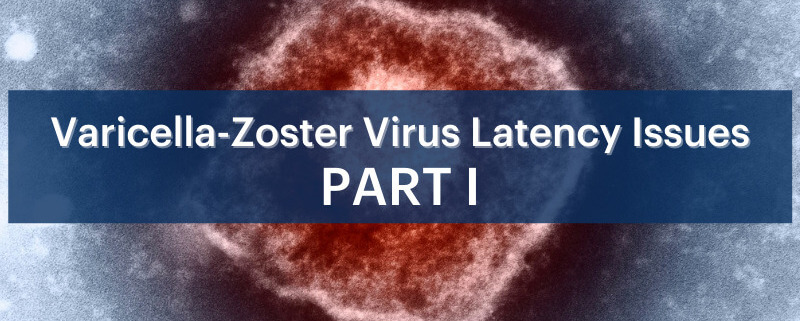INTRODUCTION: Reactivation of varicella-zoster virus (VZV) after a primary infection (chickenpox) leads to herpes zoster (HZ-shingles). In this review by Kennedy et al1., look at some recent issues in alphaherpesvirus latency, particularly in regards to VZV ganglionic latency. The key question they ask is the nature and extent of viral gene transcription during viral latency. They look at specific viral gene transcripts and the underlying mechanisms which may be involved.
DISCUSSION: VZV latency is established in ganglia throughout the entire neuroaxis including the dorsal root ganglia (DRG), trigeminal ganglia (TG) and also autonomic ganglia including the enteric ganglia. While viral reactivation may occur spontaneously, it can also follow one or more triggering factors such as diminished cell-mediated immunity to the virus as occurs with older age or immunosuppression due to drug treatment or disease, X-ray irradiation, infection, trauma or malignancy. Post-herpetic neuralgia (PHN) is the most well-known complication of HZ, causing severe and constant pain lasting longer than 3 months after the zoster rash. An early study (Cohrs et al2) used a cDNA library from the mRNA of latently infected human ganglia to show that VZV gene transcription in these ganglia was limited to VZV genes 21, 29, 62, and 63. Overall, these results identified the presence of gene 63-encoded transcripts as being the hallmark of VZV latency. However, Depledge et al3 obtained post-mortem ganglia within 6 hours of death and detected just two viral transcripts. In addition to detecting VZV ORF 63, they detected a spliced latency associated VZV transcript (VLT) that mapped antisense to the viral transactivator gene 61. This was a major finding in the VZV ganglion latency field. These authors followed up this study by clarifying the relation of VZV ORF 63 expression to the expression of the VLT. They reported (Ouwendijk et al4) that during VZV reactivation from the latent state, broad viral gene expression was induced by the VLT-ORF 63 fusion transcript. Kennedy et al further discussed the phenotypic change in chromosomes without altering it’s DNA sequence (called epigenetic modification), particularly by the binding of histone proteins involved in postranslational modification at the 3′ C-terminal domain which forms the basis of the “histone code” that has emerged as a fundamental mechanism regulating transcription. They also discuss the immunological aspects of latency involving T cells and natural killer cells which we will cover in Part II of this report.
CONCLUSION: New molecular virological technologies are driving an increased interest in VZV latency. The emergence of epigenetic mechanisms and recent interest in immunological aspects of VZV latency will no doubt lead to further understanding the mechanisms of VZV latency.
REFERENCES:
- Kennedy, P.G.E., T.H. Mogensen, and R.J. Cohrs. (2021). Recent Issues in Varicella-Zoster Virus Latency. Viruses 13, 2018. https://doi.org/10.3390/v13102018
- Cohrs, R.J., M. Barbour, and D.H. Gilden. (1996). Varicella-zoster virus (VZV) transcription during latency in human ganglia: Detection of transcripts to genes 21, 29, 62, and 63 in a cDNA library enriched for VZV RNA. J. Virol. 70, 2789-2796. https://doi.org/10.1128/jvi.70.5.2789-2796.1996
- Depledge, D.P., W.J.D. Ouwendijk, T. Sadaoka, S.E. Braspenning, Y. Mori, R.J. Cohrs, G.M.G.M. Verjans and J. Breuer. (2018). A spliced latency-associated VZV transcript maps antisense to the viral transactivator gene 61. Nat. Communincations 9,1167. https://doi.org/10.1038/s41467-018-03569-2
- Ouwendijk, W.J.D., D.P. Depledge, L. Rajbhandari, R. R., Lenac, S. Jonjic, J. Breuer, A. Venkatesan, G.M.G.M. Verjans, and T. Sadaoka. (2020). Varicella-zoster virus VLT-ORF63 fusion transcript induces broad viral gene expression during reactivation from neuronal latency. Nat. Communications 11,6324. https://doi.org/10.1038/s41467-020-20031-4
MKTG 1066 - Rev A 020322



